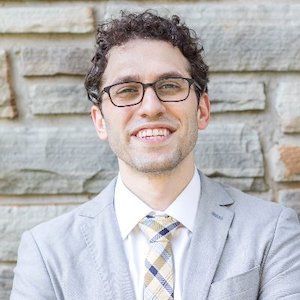Study Suggests Hearing Loss Increases Correspond with Aging, Use of Hearing Aids is Low
This analysis of Medicare beneficiaries over age 71 suggests the importance of discrete severity measures of hearing loss in older adults, as opposed to binary hearing loss terminology.
Nicholas S. Reed, AuD
Credit: Twitter

Bilateral hearing loss is very common among older adult Americans, use of hearing aids is low, and both prevalence and severity of loss coincides with aging, according to new findings related to trends on hearing loss.1
These findings came from a recent, nationally-representative study examining hearing loss trends among beneficiaries of Medicare aged 71-years and older. Given the lack of nationally-representative data on older adults’ hearing loss trends, data drawn from the National Health and Aging Trends Study (NHATS)—a nationally representative panel study of Medicare beneficiaries aged 65 years and older—was utilized.2
This data was used by the study’s investigators to explore hearing loss trends, and the research was authored by Nicholas S. Reed, AuD, from the Cochlear Center for Hearing and Public Health in Baltimore, Maryland.
“Using these data, we present the largest and most recent epidemiological estimates of measured hearing loss and hearing aid use among older adults in the US,” Reed and colleagues wrote.
Background and Findings
The NHATS (National Health and Aging Trends Study) is a comprehensive and longitudinal panel study which was begun in 2011 to examine older adult Medicare beneficiaries in the continental US. The investigators included data from NHATS on both community-dwelling adults and those residing in institutions, and oversampled by age and race to ensure proper views of underrepresented populations.
NHATS was also noted as using in-home visits for data gathering to accommodate participants’ travel restrictions, and the data is publicly available. The research team followed the Strengthening the Reporting of Observational Studies in Epidemiology (STROBE) reporting guidelines.
In the 11th round of NHATS, 2,803 out of 3,817 individuals in the study completed the required hearing measures. Missing data for demographic and socioeconomic variables were observed in an additional 30 people for ethnicity or race, 26 for education level, and 2 for income.
For the hearing measurement, pure-tone air conduction audiometry was done through an iPad-based portable audiometer and with specialized headphones. The measurements were taken by the investigators in each ear at different frequencies, and a pure-tone average was also derived for the better-hearing and worse-hearing ears.
The investigators categorized hearing loss into clinical cut points commonly used in population-level research: no hearing loss, mild, moderate, severe or greater. Hearing aid use was also recorded by the research team.
The covariates analyzed by the team included gender, age, race, and ethnicity, level of education, and participant income with respect to the Federal Poverty Level. These variables were used by the investigators to stratify their results and assess the effects of demographic and socioeconomic factors on participants’ loss of hearing.
Overall, they surveyed 2,803 participants aged 71 years or older, with approximately 33.1 million individuals. The age distribution of the study revealed that 38.3% fell between 71 - 74 years, 36.0% between 75 - 79 years, 13.8% between 80 - 84 years, 7.9% between 85 - 89 years, and 4.0% aged 90 years or older.
Additionally, the investigators pointed out that the gender distribution was approximately equal, with 53.5% female and 46.5% male, and that racially, 6.5% were Hispanic, 7.5% Black, and 82.7% White.
The research team reported that an estimated 65.3% of those aged 71 and older showed some degree of hearing loss. Among them, 37.0% had mild, 24.1% moderate, and 4.2% severe hearing loss.
The team noted there was a prevalence of loss that was higher in White, male, lower-income, and lower education attainment subpopulations and increased with age, adding that it reached 96.2% among those aged 90 and older. Despite the higher prevalence of hearing loss, only 29.2% of those with hearing impairment (approximately 6.4 million individuals) were found to have used hearing aids, with lower rates noted among Hispanic, Black, and low-income individuals.
“These robust estimates from a nationally representative study that oversamples older adults are higher than previous estimates and provide updated metrics for resource planning related to ongoing and future hearing policy initiatives,” they wrote.
References
- Reed NS, Garcia-Morales EE, Myers C, et al. Prevalence of Hearing Loss and Hearing Aid Use Among US Medicare Beneficiaries Aged 71 Years and Older. JAMA Netw Open. 2023;6(7):e2326320. doi:10.1001/jamanetworkopen.2023.26320.
- Freedman VA, Kasper JD. Cohort profile: the National Health and Aging Trends Study (NHATS). Int J Epidemiol. 2019;48(4):1044-1045g. doi:10.1093/ije/dyz109.